Different types of materials to consider for new patio
An Outdoor patio is a place at your home that will make your pastime more enjoyable and become a gathering spot for a whole family to have some quality time together. However, there is a huge variety of patio materials, and making a choice which one of them to use may be quite tricky.
This place is open to snow, rain, summer heat, and winter frost. Therefore, the building material this place is made of must retain its functionality even in the most severe weather conditions as well as bring aesthetic pleasure. In this article we will look at seven popular patio materials: pros and cons are included.
Asphalt
The main advantage of asphalt is that it is one of the cheapest and low-maintenance choices for your backyard. The material is very flexible and that is why it might be a good option for an area with drastic temperature variations. However, high heat has a bad impact on asphalt coverage. Warmth causes it to soften and when it re-hardens it often cracks and sags. Cracks can be sealed for a low price so it is not a big problem.
We considered the practical part, but what about beauty? In contrast to what you may think, asphalt doesn’t always look dull. You can do stamping or color coating in order to make it look more appealing. To sum up, asphalt is a durable material but it is more often used for driveways rather than patios, but you can choose it for your yard as well if you’d like to save money.
Concrete
The price of concrete is a bit higher than asphalt. However, the lifespan of concrete patio floors is higher. This material is also easy to maintain. Just like with asphalt, climate can be an argument against using concrete for a patio. The material reacts badly to extreme cold. In frosty winters concrete can heave, buckle, crack. To prevent it you should take some measures to winterize concrete. Also, snow and ice melt long on concrete.
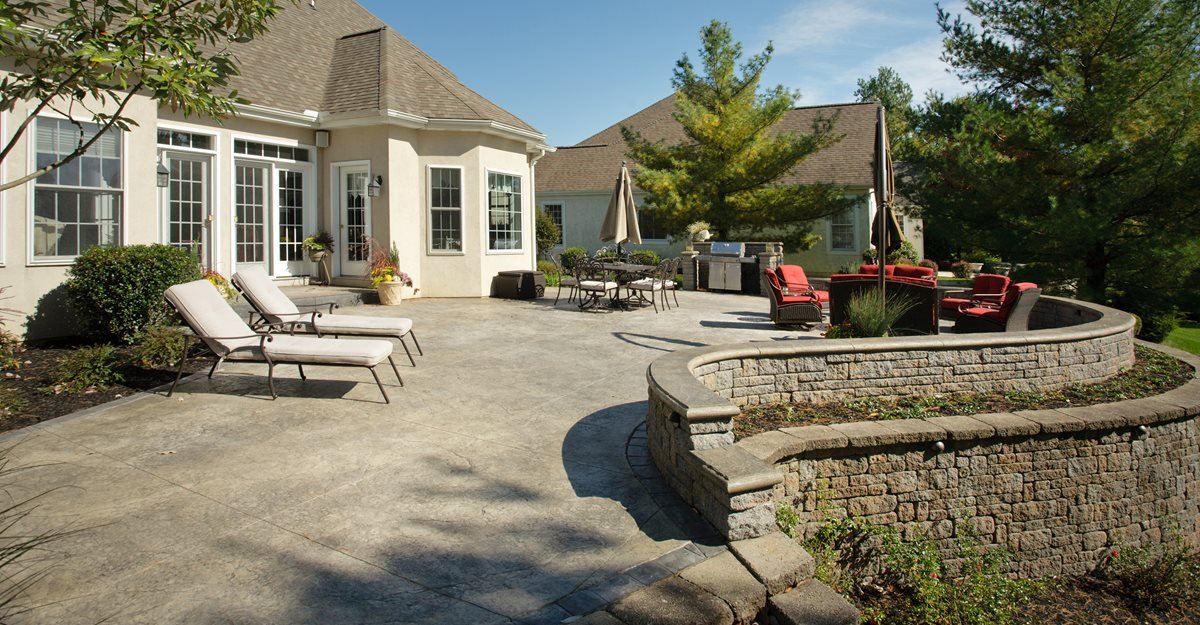
However, concrete offers a wide range of visual options. Its finish can be stamped, scored, smooth, coloured, patterned, surfaced with some other materials, and so on. Concrete can even include bizarre designs, for instance, animal footprints or geometric patterns. Also, this material is perfect if you are building a custom-shaped patio.
Pavers
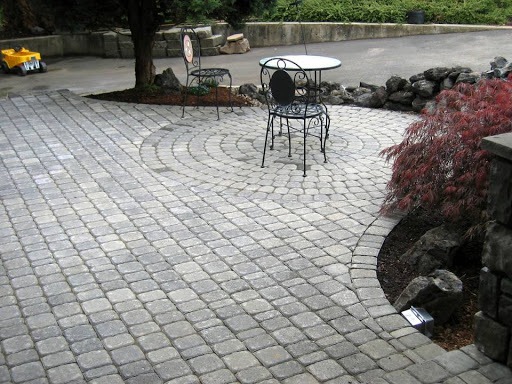
Pavers are one of the best-looking and DIY-friendly types of materials for patios and outdoor spaces. Pavers are produced from concrete, clay, stone or even recycled materials. Concrete or stone pavers are the most recommended types if we talk about patios. They last longer, and concrete pavers can be produced in many different color blends to match a variety of styles & colors to compliment the home’s exterior.. The main disadvantage of pavers is that it spreads over time. To prevent the change of your patio’s shape you’ll need to install a suitable aggregate base below the pavers and have a sturdy perimeter edge restraint. When the edge of the pavers meets landscaping or grass the pavers must be restrained with either a concrete troweled edge or a metal/plastic edging designed for pavers..
The main pro of pavers is that they can be laid in an infinite number of layouts, complex patterns, and shapes. Therefore, opportunities for unusual design solutions are huge. Pavers can be absolutely different. Take concrete pavers - they alone can look like flagstone, clay bricks, cobblestone.
Natural Stone
Patios made of natural stone look classic, elegant, and, all in all, irresistible. However, there are some things you need to keep in mind if you consider this material for your patio. Natural stone is quite costly, but it will pay off with its durability - natural stone patios will last at least a lifetime. Even if a stone breaks, it is possible to replace it without touching the rest of the coverage. Also, mind that this material becomes very hot in the sun and slippery after rain or thaw.
Natural stone patios are quite difficult to install and it is unlikely that you will be able to do it without the help of a professional. The problem is in the material itself - it is heavy and every stone has a different thickness, that is why it’s hard to make a smooth surface out of them. This work is time-consuming.
Flagstone
Many people prefer flagstone to other types of patios’ covers because of its natural-looking and timeless appearance. Flagstone is usually red, blue, or beige. Also, there are different types of this material, e.g. sandstone, bluestone, limestone. Each of them has different qualities and therefore requires different care. Flagstone is slightly rough so it doesn’t get slippery after rain. Stones have irregular shapes and sizes, they are heavy, so it would be extremely difficult to work with this material for an inexperienced DIY-lover. Mind that thoughtful flagstone patio design needs adequate drainage in order to reduce the effects of erosion.
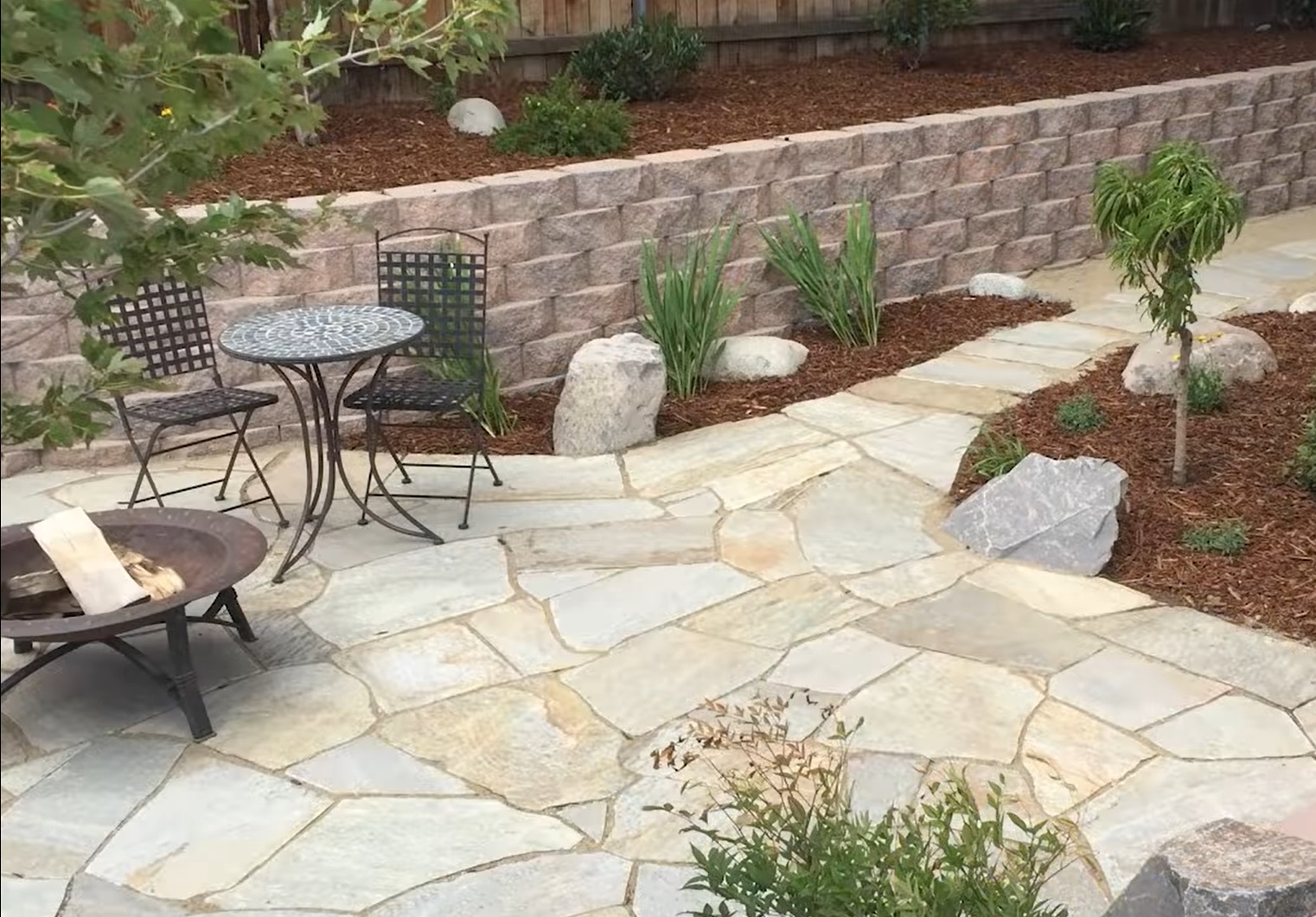
Gravel
Gravel patios are usually associated with English cottage-style gardens and look quite attractive. It is probably the most easy-to-install material - even a novice won't have any problems with it. How to maintain a gravel patio is another question. The main problem is weeds. To prevent their grow you’ll have to install gravel over landscaping fabric. Also, you’ll need to keep the surface level and rake stones from time to time. Another advantage of gravel is that it’s low-cost and offers good drainage. However, it provides poor support for outdoor furniture and is uncomfortable to walk on barefoot.
In a nutshell, set your choice upon gravel if your priority is a quick and easy installation.
Send us a request
And get a unique offer
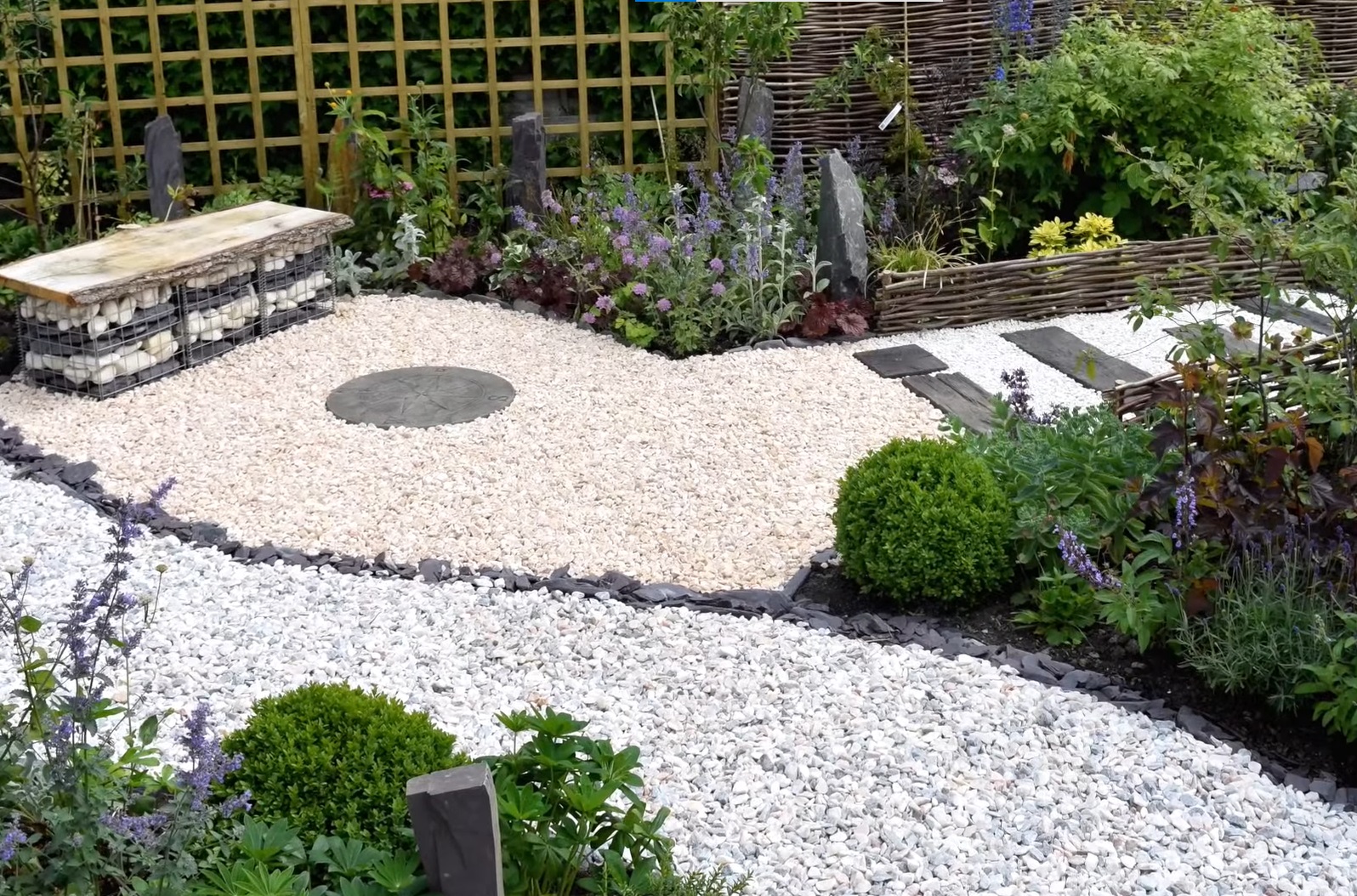
Sand
Sand is usually used as a leveling bed for other patio materials (for example, with clay brick or cut stone). However, sand can be laid solo. You may have already guessed that installing a sand patio is not rocket science. Only gravel can rival it in this aspect. Also, sand is cheap.
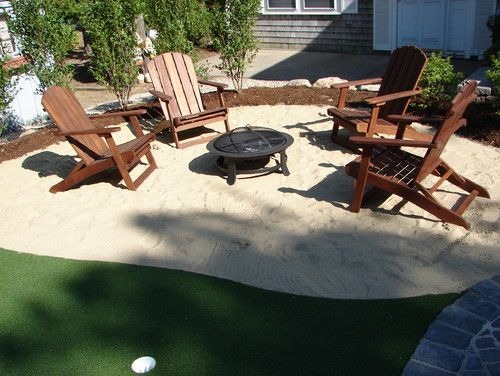
Using sand as a patio coverage is not for everyone. There are some disadvantages: furniture stands uneven on sand, and you certainly won’t want to spend time on a sand patio after rain. But if your patio is beach- or tropical-themed, or you have a pool in your yard, you’d better consider this option.
To conclude, review all the different materials for patios and take into account your budget, preferences, and needs before choosing your perfect patio’s hardscape.
Get a quote for free!
Complete the form below, and we'll call you to
discuss your exact project requirements






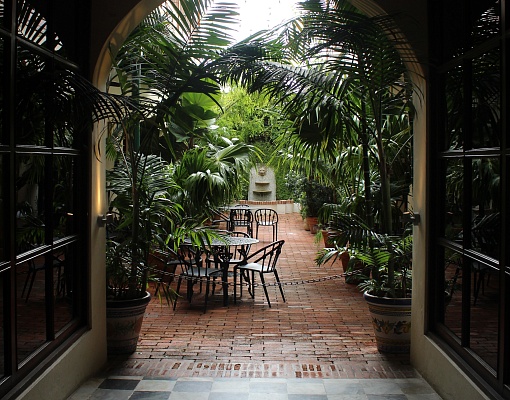

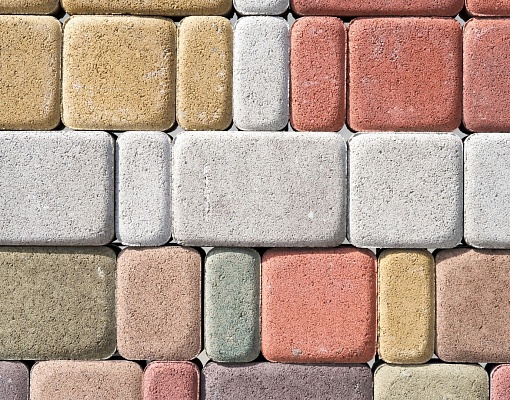

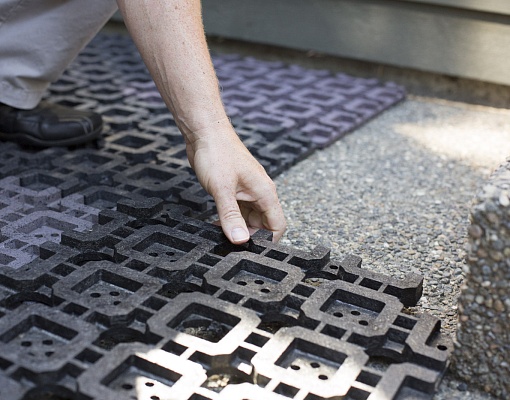
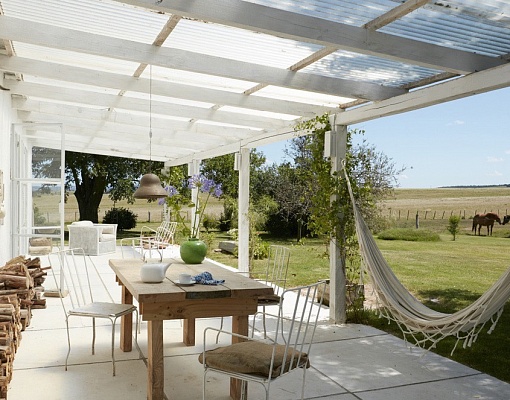
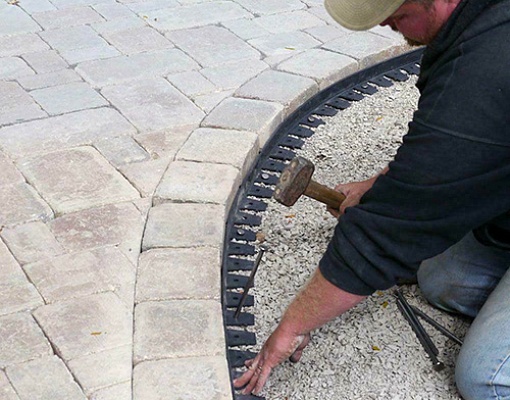
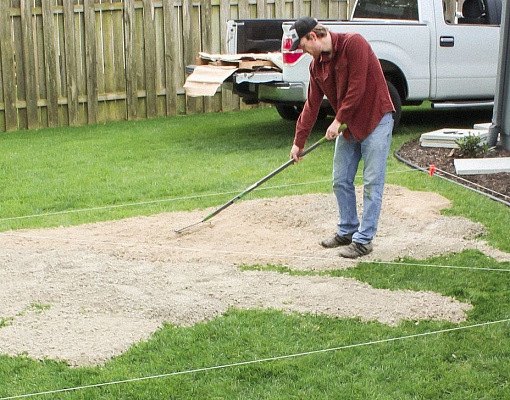
Leave a comment